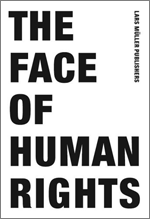 This is not a design book, nor is it a book full of flashy stunts and whimsical typographic treatments. Rather, it is a book designed to communicate about a problem that plagues humanity. Over 700 pages are dedicated to visualizing and critiquing human rights, civil rights, standards of living, the protection of private life, the right to work, torture, and more. We could just as easily turn on the nightly news to learn about these problems and see where they’re happening in our world, but this book does more than paint a brief picture, it questions these problems and forces the reader to do the same.
This is not a design book, nor is it a book full of flashy stunts and whimsical typographic treatments. Rather, it is a book designed to communicate about a problem that plagues humanity. Over 700 pages are dedicated to visualizing and critiquing human rights, civil rights, standards of living, the protection of private life, the right to work, torture, and more. We could just as easily turn on the nightly news to learn about these problems and see where they’re happening in our world, but this book does more than paint a brief picture, it questions these problems and forces the reader to do the same.

Is it human to live in a cardboard box?
Should the word ‘free’ only be allowed in statements as “This dog is free from lice”?
What are we supposed to believe?
Is the state entitled to kill?
How can they say I am different just because of the colour of my skin?
Who has the right to own what?

These are some of the headlines that lead into each chapter, neighbored by a spiral of human rights that acts as a table of contents as you move through the book. Powerful photography captures people going about their day: frozen in a state of fear, protesting, looking over a home’s barbwire fence, toting a gun through the desert, waiting in a chow line for some rice, enjoying the right to life, smiling with friends and neighbors, playing in the streets, laying in abandonment on the dirt, or tending to the ill. Visually and verbally, the book not only showcases people celebrating human rights but also those suffering through times of human rights violation. Just as the editors state that it is “impossible to cover all relevant problems and all countries,” in this brief space, I am not capable of painting a complete picture of what The Face of Human Rights shows its readers, nor can I sum up its call to arms and moral imperative.
The power of design has been an issue covered at conferences, in essays, and through academia. Designers define that power through their own values and judgment, choosing how they will serve an audience and client. The Face of Human Rights is a prime example of how words and images can come together to serve the public and greater good—communicating about both the blessings we cherish and frightful situations some must cope with.
The Face of Human Rights
edited by Walter Kälin; Lars Müller; Judith Wyttenbach
Hardcover: 720 pages; 500 Illustrations
9.6 x 6.6 x 2.2 inches
Publisher: Lars Müller
ISBN: 3037780177






Great post.
I had a professor when I was in university who said that, for those of us in first world countries, every dollar we have is a vote. We make a statement about how we want the world to be each time we make a purchase. I don't think it was an idea originating from my professor, but it is one I have never forgotten.
On Mar.16.2006 at 12:33 PM